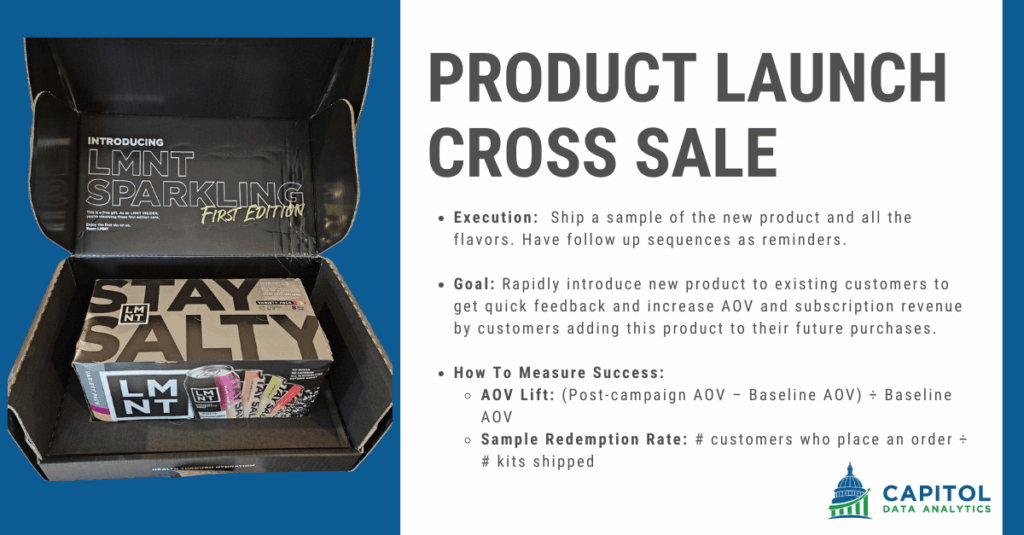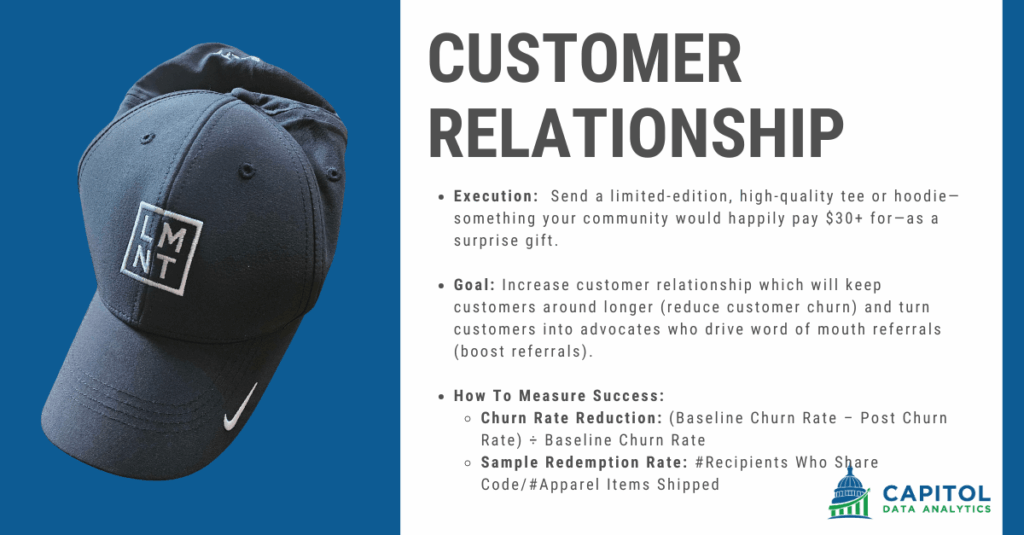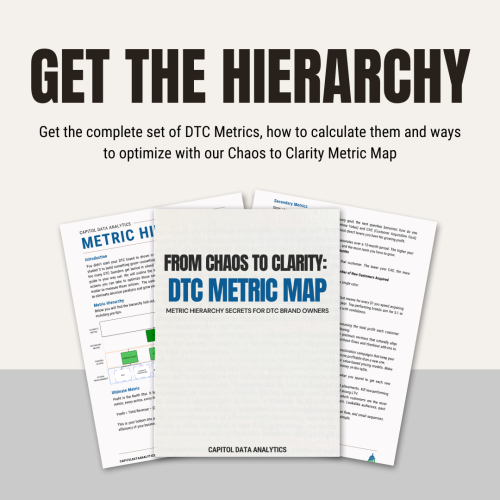Understanding who is likely to purchase allows you to optimize your efforts. How do you do this?
Read MoreIf you’ve ever poured thousands into winning new customers—only to see them buy once and vanish—you’re wasting the very fuel that should power your growth. While everyone fixates on driving down acquisition costs, you’re overlooking the other half of the profitability equation: Lifetime Value (LTV). Think of LTV as the engine that turns each dollar you spend on ads into a multiplying profit machine. To crank that engine, you’ve got two levers: cross-sales (getting customers to add complementary products) and purchase frequency (getting them back for more).
In this article, I’m going to show you exactly how one American-Made brand LMNT built and ran two targeted programs—one to spark high-value cross-sales, and the other to increase customer relationships—and the tactics they used to turn one-and-done buyers into lifelong fans. If you’re ready to stop watching revenue slip through the cracks and start engineering real, measurable LTV growth, keep reading.
Let’s set the scene: electrolyte drink mix packets have exploded in popularity, and the market is now flooded with competitors all battling for share. Rather than race to the bottom on price, one standout brand—LMNT—commands a premium and leans on first-mover advantage and razor-sharp customer relationship strategies. In this section, I’ll unpack the exact tactics I’ve experienced firsthand, starting with their innovative cross-sale launch campaign.

To kick off the new‐product rollout, they sent every eligible customer a branded sampler containing samples of each flavor—think of it as a hands-on teaser that invites them to taste before they buy. Each kit arrives with a personalized note and a link directly to a one-click reorder page. Rather than letting the box gather dust, they layered on a short, high-touch follow-up sequence(I don’t have the exact sequence but something like this): a reminder email three days after delivery, an incentive (free shipping or bonus points) on day seven, and a quick “how’d you like it?” survey on day fourteen. This drip not only keeps the product top of mind but also captures valuable feedback in real time.
The core objective is twofold: first, to accelerate trial among the most engaged customers (those who’ve already shown loyalty with multiple orders); second, to drive lift in Average Order Value and subscription adoption by turning trial kits into repeat purchases. By focusing on existing subscribers, LMNT bypassed costly acquisition channels and tapped directly into an audience that knows—and trusts—the brand.
Success hinges on two tightly defined metrics:
By monitoring both the uplift in spend and the conversion of samplers into subscribers, you’ll know exactly how effective your program is—and where to tweak copy, cadence, or incentives to maximize trial and long-term value.

The goal of this campaign is to deepen emotional connection so customers renew subscriptions and keep coming back (reduce churn) and inspire recipients to share a unique code with friends, turning every gifted customer into a mini-acquisition channel. Success here is measured by these two variables:
By over-delivering with an item your customers would willingly purchase, you trigger a powerful reciprocity effect: loyalty soars, churn plummets, and word-of-mouth referrals ignite. Best of all, because you’re measuring both churn reduction and referral rate, you’ll see exactly how much extra lifetime value each gifted hoodie—or tee—generates, allowing you to fine-tune the program for maximum impact.
Delivering unexpected value—whether through a risk-free flavor sampler or a surprise premium tee—creates powerful reciprocity loops that turn one-time buyers into loyal advocates. Ask me: I am still an avid LMNT customer.
But the real magic happens when you pair these high-impact tactics with the right metrics. Tracking AOV lift, sample redemption rate, churn-rate reduction, and referral rate isn’t just bookkeeping—it’s the fuel gauge for your LTV engine. Ready to cut through the data clutter and focus on the metrics that truly drive profitable growth? Download our “From Chaos to Clarity: DTC Metric Hierarchy” guide to learn exactly which numbers to track—and how to turn them into your most powerful growth levers.

Understanding who is likely to purchase allows you to optimize your efforts. How do you do this?
Read MoreBreak Open the Black Box—Unlock the Power of Sales Attribution for American-Made DTC Brands.
Read MoreAs an American-made manufacturer, you've relentlessly optimized your production line, yet three hidden wastage points beyond your view still threaten your profitability and even your business survival.
Read More